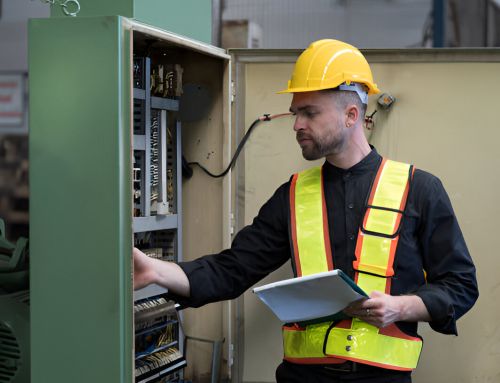
In the world of electrical safety, the role of a Residual Current Device (RCD) is paramount, especially when assessing the safety of electrical installations via an Electrical Installation Condition Report (EICR). The absence of an RCD can be a significant red flag, signaling potential hazards like electric shocks or fire risks. But does this automatically result in a fail on an EICR? This raises an important question: under what circumstances can an EICR pass without an RCD, and what do modern regulations say about it? This inquiry not only reflects the ongoing evolution of safety standards but also prompts a critical examination of older installations that may lack this vital protection. Let’s understand Is No RCD a Fail on Eicr?
What is an RCD and Its Role in Electrical Safety?
An RCD (Residual Current Device) is a crucial safety mechanism in modern electrical systems, designed to protect against electric shocks and prevent fire hazards. It monitors the electrical current flow through a circuit and automatically cuts off the power when it detects an imbalance, such as that caused by a person touching a live wire or a fault in the circuit.

Understanding the various RCD types is essential for implementing the correct device in specific applications. The two primary categories are Fixed RCDs, which are installed in the consumer unit and provide protection to multiple circuits, and Socket-Outlet RCDs, which are integrated into socket outlets and protect individual appliances.
Additionally, Portable RCDs are available for temporary connections, particularly useful in construction environments or when using outdoor equipment.
Each type of RCD is tailored to mitigate specific electrical hazards effectively. For instance, a Fixed RCD is highly recommended in residential and commercial buildings because it offers comprehensive protection that covers all connected circuits and devices, significantly reducing the risk of electrical injuries and fires.
In contrast, a Socket-Outlet RCD is particularly effective in preventing accidents in high-risk areas such as kitchens and bathrooms, where the use of electrical appliances is frequent.
Why RCDs Are Necessary in Modern Electrical Installations
Understanding the various types and roles of RCDs sets the stage for appreciating their necessity in modern electrical installations. Residual Current Devices (RCDs) are critical safety components that protect against electrical faults, which can lead to fires or electrocution. Their integration into electrical systems is not only a safety measure but also a compliance requirement under many electrical regulations.
The necessity of RCDs is underscored by several key benefits:
- Prevention of Electrical Fires: RCDs detect imbalances in the electrical current and disconnect the power supply when leakage currents that could cause fires are detected.
- Protection Against Electric Shock: They provide a critical safety layer for individuals by cutting off the power in fractions of a second upon detecting a fault, significantly reducing the risk of fatal electric shocks.
- Compliance with Safety Standards: Modern electrical regulations often mandate the use of RCDs in both residential and commercial buildings to meet safety standards and protect occupants.
These devices are integral to modern safety protocols in electrical engineering, reflecting an evolution in regulatory standards aimed at enhancing occupant safety.
Adherence to these regulations is not only legally binding but also essential for the integrity and safety of electrical installations.
Does the Absence of an RCD Result in an EICR Failure?
Regarding the critical nature of Residual Current Devices (RCDs) in electrical systems, their absence can indeed lead to a failure on an Electrical Installation Condition Report (EICR).

The examination of an electrical installation for EICR compliance focuses heavily on safety measures, including the presence of RCDs which protect against electric shock and fire hazards. Their absence is often viewed as a significant non-compliance issue, depending on the specific requirements of the installation’s usage and the environments in which they are employed.
| Factor | Impact on EICR Result |
|---|---|
| Presence of RCD | Likely pass if appropriately installed |
| Absence of RCD | Likely fail, subject to exceptions |
| Use of RCD Alternatives | Conditional pass, depending on adequacy |
| Overall Electrical Compliance | Assessed in combination with other factors |
In scenarios where traditional RCDs are not present, the use of RCD alternatives may be considered. However, the suitability and effectiveness of these alternatives play a crucial role in determining the EICR outcomes. These alternatives must meet or exceed the protective capabilities of standard RCDs to ensure both safety and compliance. The detail-oriented approach of EICR assessors ensures that every aspect of electrical safety is scrutinized, reaffirming the importance of adhering to regulatory standards.
Common Scenarios Where No RCD May Be Found
Often, RCDs may be absent in older electrical installations where updates to meet current safety standards have not been implemented. These outdated installations, typically found in buildings constructed before the widespread adoption of RCD technology, often present a higher level of electrical risk.
A thorough risk assessment is crucial in such environments to determine the urgency of upgrading electrical safety measures.
To better understand where RCDs might be missing, consider the following common scenarios:
- Historic Buildings: Structures that have preserved their original architectural integrity often retain their initial electrical systems. Due to heritage preservation guidelines, modifications, including the installation of RCDs, can be complex and require specialized approaches.
- Industrial Settings: Older industrial facilities might still operate with their original electrical setups to avoid production disruptions. These environments often prioritize continuity over compliance until major renovations are undertaken.
- Rural Properties: In remote areas, electrical standards enforcement can be less rigorous due to the infrequency of inspections. Properties in these locations might not have been updated to include RCD protection, reflecting a gap in safety compliance.
In each scenario, the absence of RCDs in electrical circuits significantly increases the risk of electrical accidents, underscoring the necessity for targeted inspections and updates.
What to Do if Your EICR Highlights No RCD Protection
If your Electrical Installation Condition Report (EICR) indicates a lack of Residual Current Device (RCD) protection, immediate action is required to address this safety shortfall. The absence of RCDs exposes occupants to potential electrical shock or fire hazards, particularly in circuits that involve outdoor equipment or areas prone to moisture.

To rectify this, consider the following steps, which not only ensure compliance with electrical safety regulations but also enhance the overall safety of your electrical installations:
| Step | Action |
|---|---|
| 1 | Consult a Certified Electrician |
| 2 | Evaluate the Need for RCD Installation |
| 3 | Consider RCD Alternatives |
| 4 | Plan for Necessary Electrical Upgrades |
| 5 | Implement and Test New Safety Measures |
Firstly, hiring a certified electrician who can assess the electrical system comprehensively is crucial. They can evaluate whether existing circuits can be retrofitted with RCDs or if there are viable RCD alternatives that meet the regulatory standards.
Next, planning the necessary electrical upgrades is essential. This might include enhancing circuit designs or updating outdated wiring to support new RCD installations. Lastly, once the upgrades are implemented, rigorous testing must be conducted to ensure all new installations provide the intended protection.
Conclusion
In conclusion, the absence of a Residual Current Device (RCD) in electrical installations is considered a significant non-compliance issue during an Electrical Installation Condition Report (EICR). This deficiency poses severe risks, including the potential for electric shock and fire hazards. Compliance with safety regulations mandates the installation of RCDs in specified areas to mitigate risks effectively. Property owners are urged to address this critical safety measure promptly to ensure compliance and enhance electrical safety standards.
About the Author: LandlordCertificate
Related Posts
Get Social
Recent Posts
- Fuse Box Installation: Everything Homeowners Need to Know Before Getting Started
- EICR Certificate London: Understanding Your Legal Duty as an Owner
- Behind the Scenes of a Gas Safety Certificate London Inspection in Homes
- The Role of Fire Alarm Installation in Building Safety
- How Often Should a Fire Risk Assessment Be Reviewed?













